In today’s digital age, privacy is more important than ever. With our smartphones holding a treasure trove of personal information, it’s crucial to protect ourselves from prying eyes.This article will guide you through 12 essential smartphone privacy settings that you should enable RIGHT NOW. Each tip is designed to enhance your security and keep your data safe from potential threats.
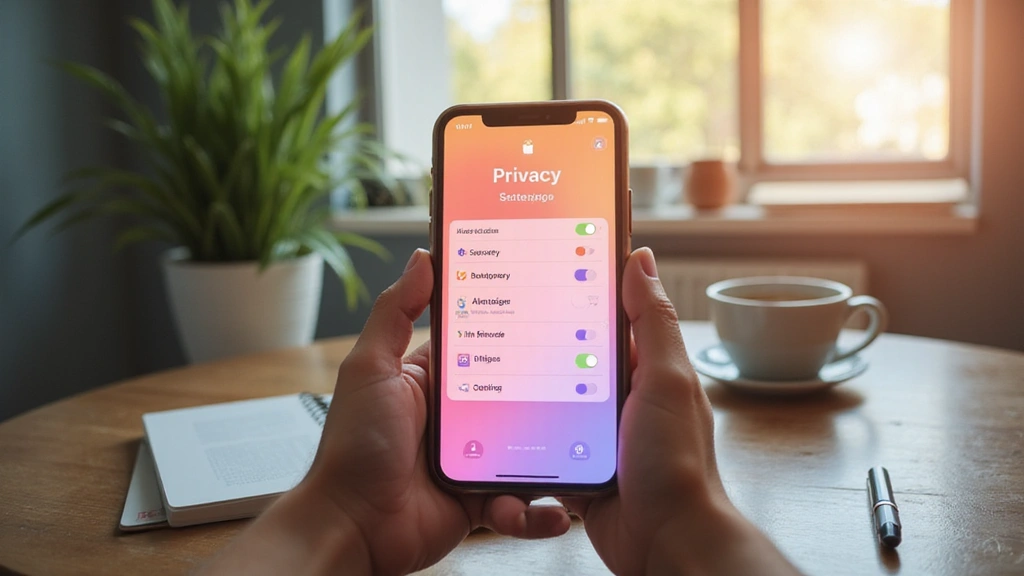
Table of contents
- 1. Enable Two-Factor Authentication
- 2. Adjust App Permissions
- 3. Use a VPN
- 4. Enable Automatic Updates
- 5. Lock Your Screen
- 6. Manage Location Settings
- 7. Turn Off Bluetooth When Not in Use
- 8. Clear Browsing Data Regularly
- 9. Use Encrypted Messaging Apps
- 10. Review Privacy Policy Settings
- 11. Use Strong Passwords
- 12. Sign Out of Accounts When Not in Use
- Conclusion
Get ready to take control of your digital life and ensure your personal information stays where it belongs—with you!
1. Enable Two-Factor Authentication
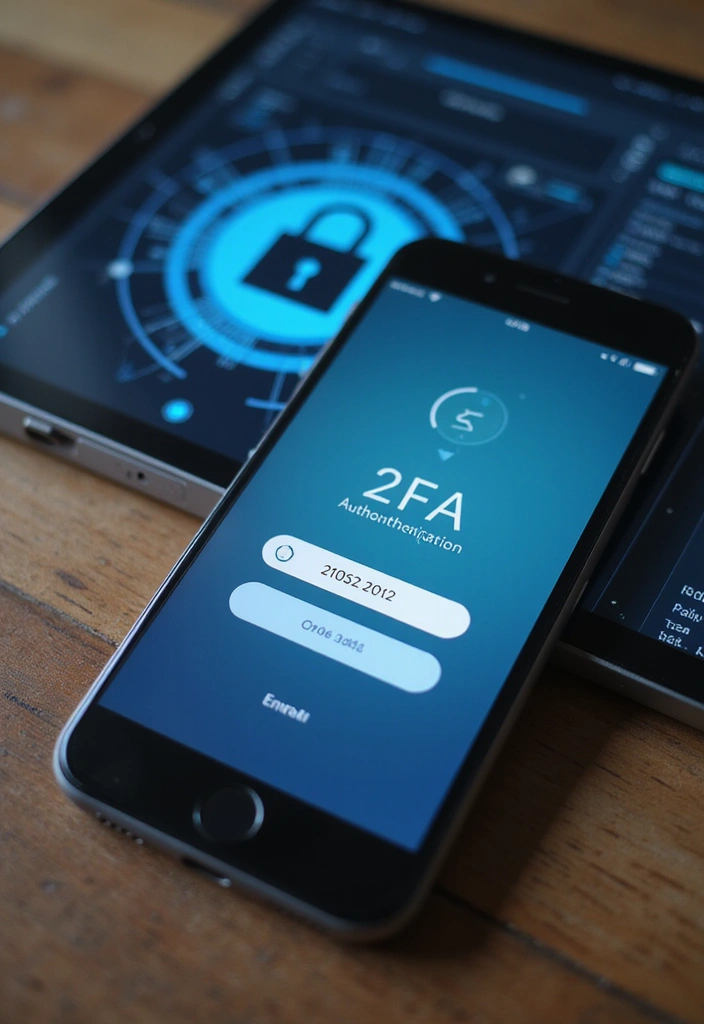
Two-factor authentication (2FA) is an essential security feature that adds a significant layer of protection to your accounts, making it much more challenging for hackers to gain unauthorized access. With 2FA enabled, you will receive a verification code through an authentication app or via SMS each time you log in, ensuring that only you can access your account.
To activate this setting, navigate to your phone’s security options and look for two-factor authentication under your account settings. This straightforward step is crucial, particularly for high-risk accounts such as email and banking.
While strong passwords are vital, incorporating 2FA is a powerful defense against identity theft. Make it a practice to utilize 2FA wherever possible. For an enhanced authentication experience, consider using the Authy app, which can help you generate secure codes easily.
You may also want to invest in a YubiKey security key for an even more secure method of 2FA. This physical device provides an extra layer of protection that is hard for hackers to bypass.
Additionally, using a password manager like LastPass Premium can help you securely manage your complex passwords. This not only ensures you maintain unique passwords for different accounts but also makes it easier to update them regularly, reducing the risk of breaches.
Lastly, engage in routine security audits by reviewing which apps have access to your accounts and updating your settings as necessary. This proactive approach can be key in preventing potential data breaches in the future.
Product Recommendations:
• Authy app
• YubiKey security key
• LastPass Premium
2. Adjust App Permissions
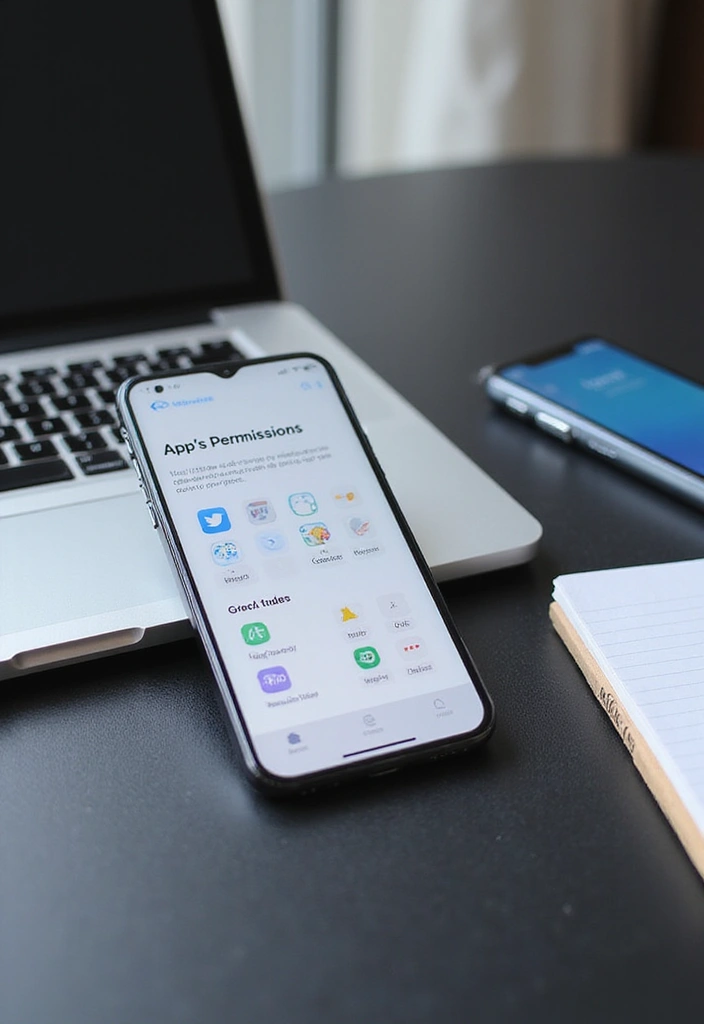
Many applications request access to your location, camera, microphone, and contacts—often more than is truly necessary. To enhance your privacy, it’s crucial to review and adjust these permissions regularly.
Start by navigating to your app settings and checking the permissions granted to each app. For example, if a simple game is asking for access to your location, you should reconsider whether that access is justified. By limiting permissions, you ensure that only essential information is shared, which significantly reduces the risk of data misuse.
Additionally, consider utilizing app permission management tools to help you easily oversee and adjust these settings across your apps. This proactive approach not only enhances your privacy but can also improve your phone’s performance.
Make it a habit to routinely audit your apps and uninstall any that you no longer use. This practice not only protects your personal data but also minimizes your digital footprint.
Furthermore, stay informed about the applications you download and be cautious of those that require excessive permissions. You can also explore privacy-focused apps that prioritize user data protection, ensuring a safer smartphone experience. Taking these steps will empower you to maintain tighter control over your personal information and safeguard your online presence.
Product Recommendations:
• App permission management tools
• privacy-focused apps
3. Use a VPN
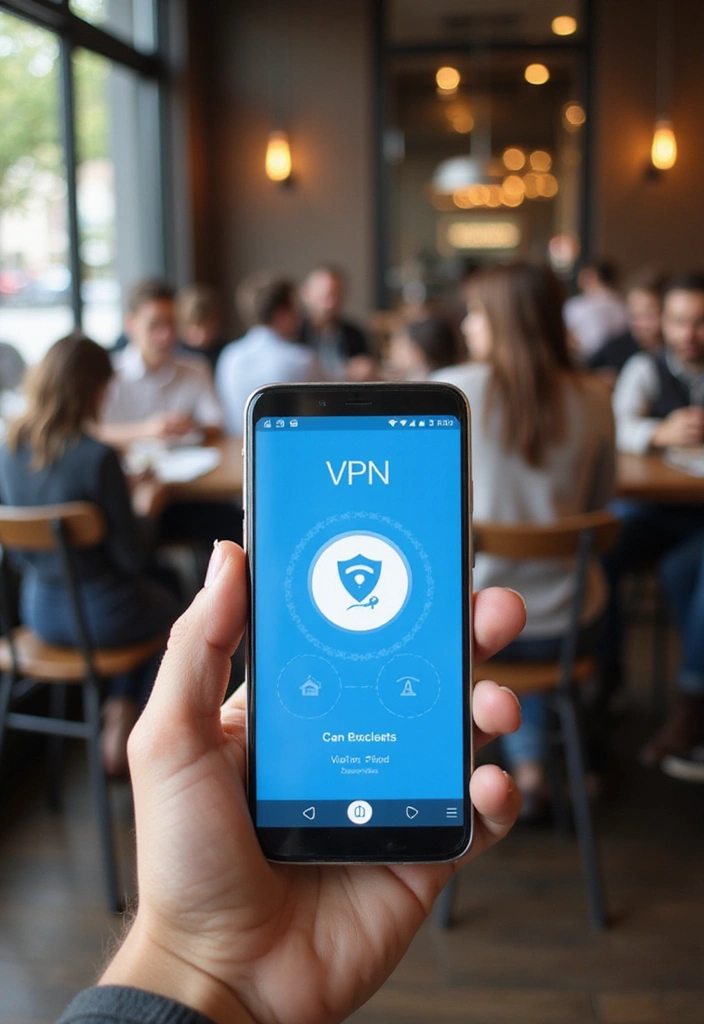
A Virtual Private Network (VPN) is an essential tool for enhancing your online security by encrypting your internet connection. This added layer of protection is crucial, especially when using public Wi-Fi networks, where your data can be vulnerable to interception by hackers and data snoopers.
By activating a VPN, you create a secure tunnel for your data, ensuring that your browsing habits and sensitive information remain private. It’s advisable to choose a reputable VPN service that doesn’t track your activity. Some highly recommended options include ExpressVPN, known for its robust encryption and user-friendly interface, and NordVPN, which also offers strong security features. Another great choice is CyberGhost VPN, which provides excellent privacy protection.
Make it a habit to activate your VPN whenever you connect to public Wi-Fi, such as in cafes or airports. This simple practice can significantly reduce your risk of falling victim to data theft or identity fraud, ultimately saving you from potential headaches down the line.
Product Recommendations:
• ExpressVPN subscription
• NordVPN subscription
• CyberGhost VPN subscription
4. Enable Automatic Updates
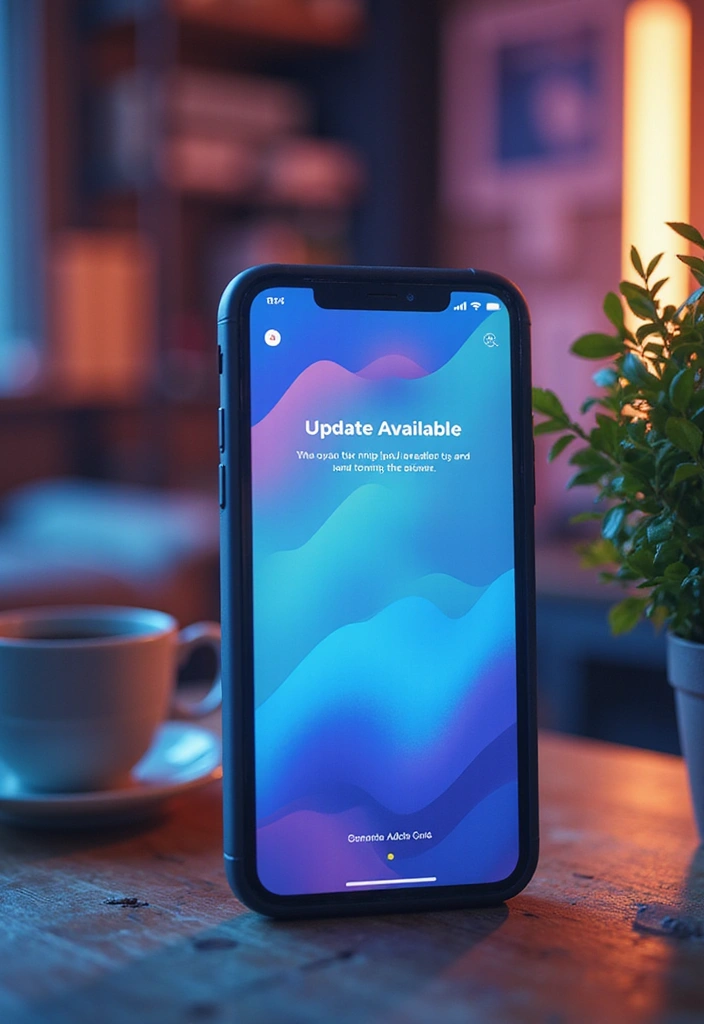
Keeping your smartphone’s operating system and apps updated is essential for maintaining security. Developers regularly release updates to address vulnerabilities that cybercriminals could exploit, so enabling automatic updates is a smart move.
To ensure you’re always protected, navigate to your settings and activate automatic downloads and installations for both system and app updates. This way, you won’t have to worry about manually checking for updates. Additionally, consider investing in a reliable smartphone charging dock to keep your device powered during updates, as some may require a reboot to fully implement changes.
Regular updates not only enhance security but also improve performance and introduce new features, making your device run smoother and more efficiently. It’s a good practice to restart your phone periodically after updates, ensuring all improvements take effect. To keep your device safe from physical damage while it’s being updated, a sturdy phone case can provide the protection it needs.
By keeping your smartphone up-to-date, you significantly lower the risk of security breaches and enjoy an overall better user experience.
Product Recommendations:
• sturdy phone case
• screen protector
5. Lock Your Screen

A fundamental yet highly effective way to safeguard your personal data is by securing your smartphone with a robust screen lock. This can be achieved through a strong password, PIN, or biometric security options such as fingerprint scanning or facial recognition. By implementing these measures, you significantly reduce the likelihood of unauthorized access to your sensitive information in the event that your phone is lost or stolen.
To get started, navigate to your phone’s security settings and select the locking method that suits you best. Biometric options not only offer enhanced security but also provide quicker access to your device. Remember to steer clear of easily guessable combinations, such as birthdays or simple sequences like ‘1234.’
In addition to locking your screen, consider investing in a protective phone case with built-in security features, which can offer an extra layer of protection for your device. You can find a suitable option here.
Don’t forget to enable the ‘Find My Device’ feature to help you track your phone in case it goes missing. Adding a quality screen protector can also help maintain your device’s integrity while you prioritize security; check out some options here.
Making screen lock a priority is an essential and non-negotiable step in enhancing your smartphone privacy settings.
Product Recommendations:
• Fingerprint scanner smartphone
• rugged phone case with security features
• high-quality screen protector
6. Manage Location Settings
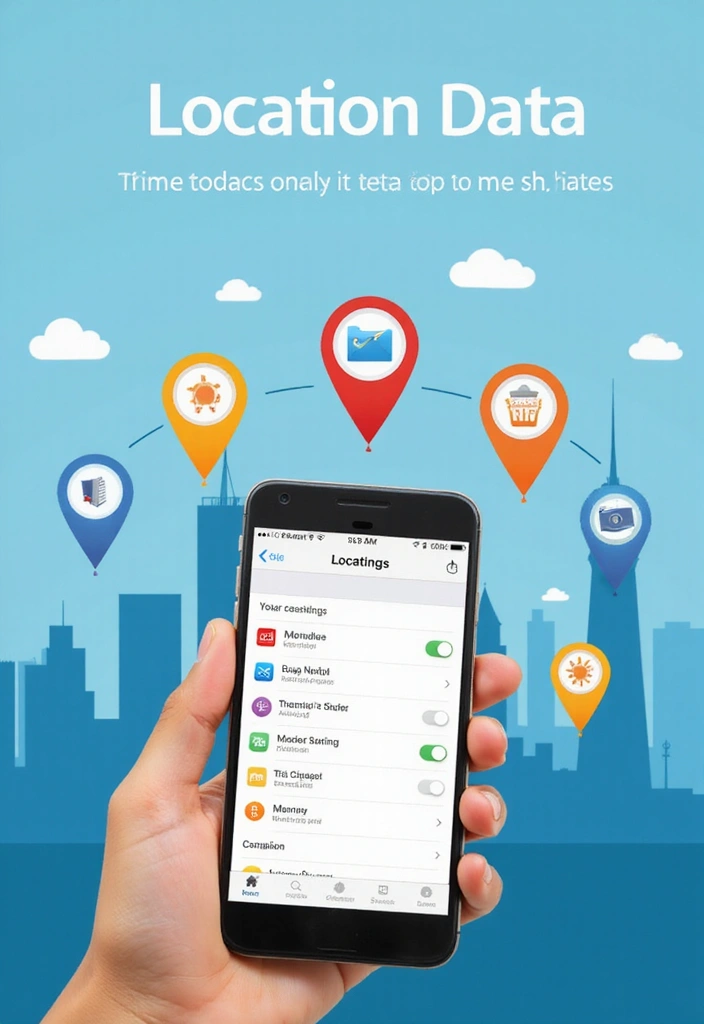
Location services can offer significant advantages, but they also introduce privacy risks if not handled appropriately. Many applications continue to track your location even when they aren’t actively in use.
To take control of your location settings, navigate to your phone’s privacy settings to review which apps have access to your location. For those apps that don’t require constant tracking, opt for ‘While Using the App’ to limit access.
You might also want to completely disable location services for certain apps, especially social media platforms, to enhance your privacy without losing essential functionality. Regularly revisiting these settings is crucial, particularly after downloading new applications, to ensure your privacy remains intact.
Moreover, if you’re concerned about tracking your own location for safety reasons, consider investing in a GPS tracking device to keep your loved ones informed without exposing your data unnecessarily.
Additionally, there are location management apps that can assist you in efficiently managing your location settings across various applications.
Be cautious when sharing your location on social media, as it may disclose more personal information than you intend. In today’s interconnected environment, safeguarding your location data is more important than ever.
Product Recommendations:
• GPS tracking device
• location management apps
• smartphone privacy screen protector
7. Turn Off Bluetooth When Not in Use
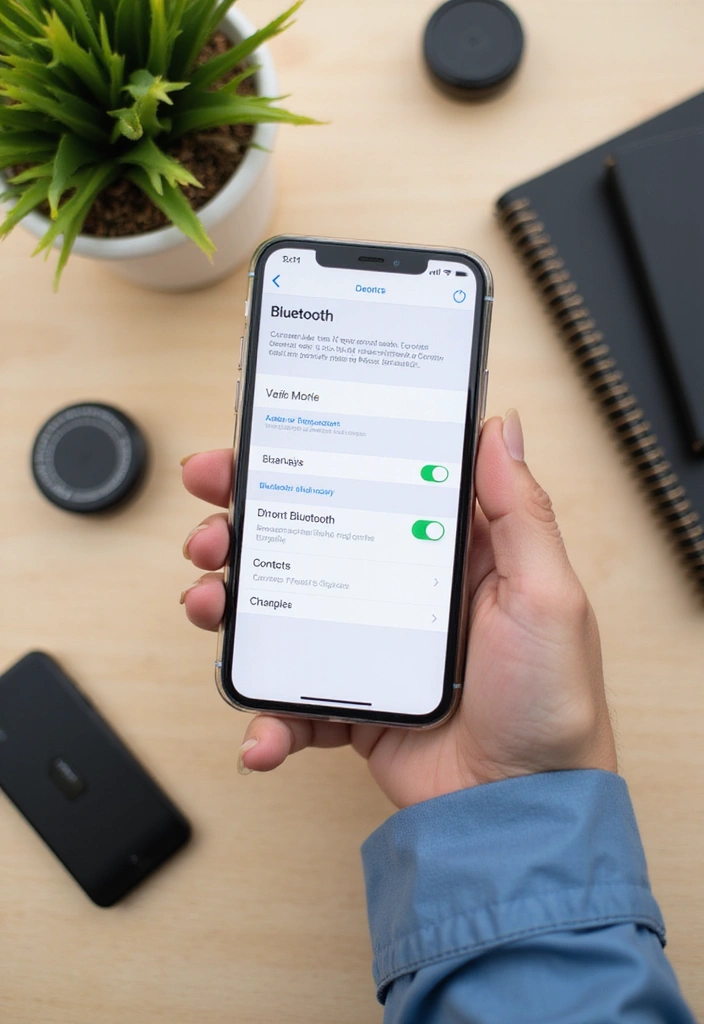
Keeping Bluetooth enabled when it’s not in use can expose your device to unnecessary security risks. Hackers often exploit Bluetooth connections to gain unauthorized access to your personal data.
To safeguard your information, make it a habit to turn off Bluetooth, especially in public spaces. You can easily do this by accessing your quick settings menu and toggling Bluetooth off.
If you use devices like a Wireless Bluetooth speaker or a Bluetooth tracker, ensure they are only connected when needed.
Additionally, regularly review your list of paired devices and remove any that are no longer in use to minimize potential entry points for hackers.
Stay vigilant for suspicious Bluetooth devices in crowded areas, as this can further enhance your smartphone’s security and reduce exposure to unwanted connections. By adopting these simple practices, you significantly bolster your data protection.
Product Recommendations:
• Wireless Bluetooth headphones
• Bluetooth range extender
8. Clear Browsing Data Regularly
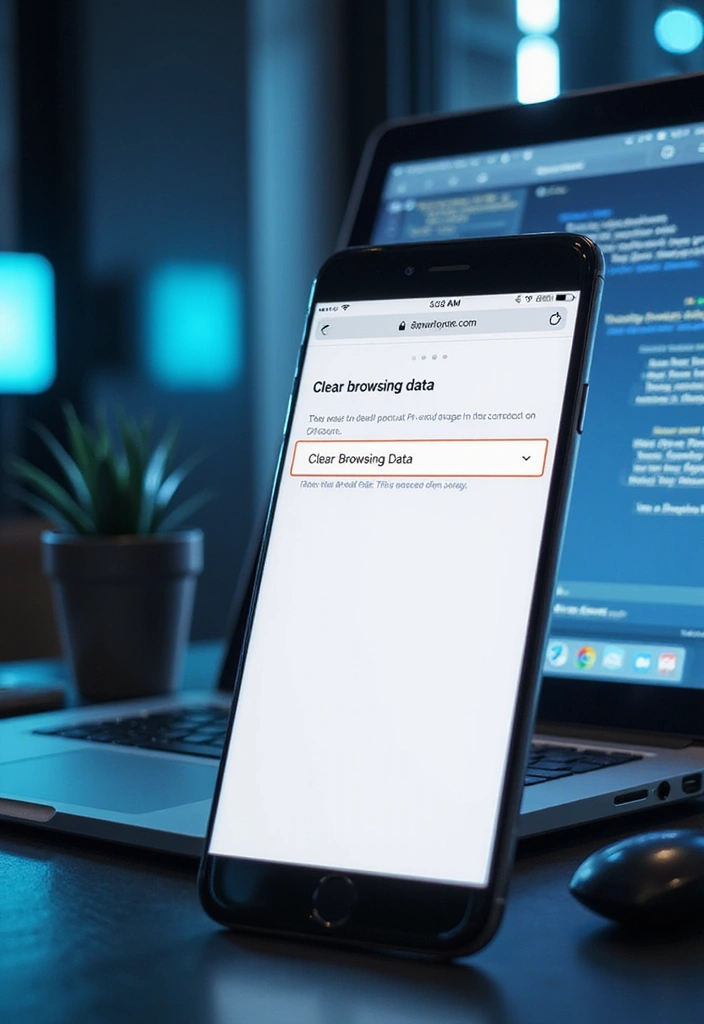
Your browsing history can disclose significant information about your online habits and preferences. To safeguard your privacy, it’s essential to regularly clear your browsing data, which helps eliminate evidence of your online activities.
To do this, navigate to your web browser settings and locate the option to clear your history, cookies, and cached images. For added convenience, consider using cleaning apps for smartphones, such as this cleaning app, which can automate the process on a scheduled basis.
Additionally, for sensitive searches, you might want to utilize private browsing modes to avoid leaving any traces. Be sure to review and manage your saved passwords and autofill information carefully; tools like browser extensions for privacy can assist in enhancing your security while you browse.
By adopting these habits, you not only bolster your privacy but also improve your device’s performance by freeing up valuable storage space. You may also consider using web privacy protection software, like this software, to further enhance your online security and peace of mind.
Product Recommendations:
• Smartphone cleaning app
• web privacy protection software
• browser extensions for privacy
9. Use Encrypted Messaging Apps
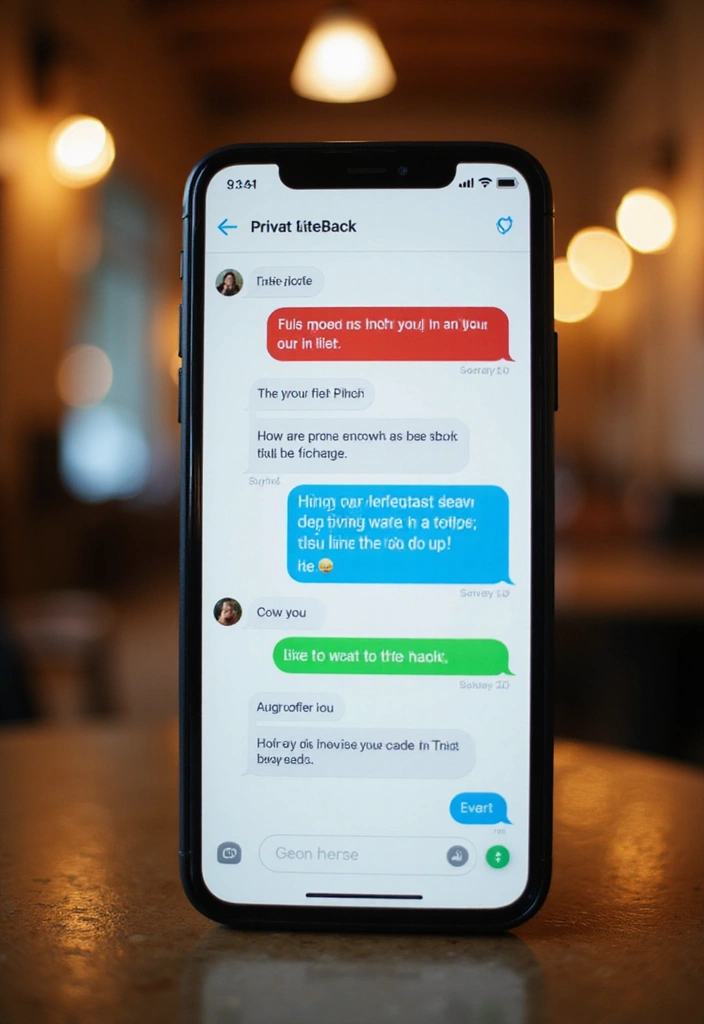
Standard messaging apps often lack the robust security necessary for safeguarding your private conversations. To ensure your communications remain confidential, consider switching to encrypted messaging applications like Signal and WhatsApp, both of which offer end-to-end encryption. This means that only you and the person you’re chatting with can access the messages exchanged.
To get started, simply download your preferred encrypted messaging app and invite your contacts to join you. This not only secures your conversations but also protects any media and calls you share.
Make the most of the app’s security features by enabling options like disappearing messages, which can enhance your privacy even further. Additionally, keeping these apps updated is crucial to benefit from the latest security enhancements.
In a time when data breaches and hacks are rampant, communicating securely through encrypted messaging services is a wise choice for peace of mind. If you’re looking for secure calling solutions, explore encrypted calling services to further protect your voice conversations.
Product Recommendations:
• Signal Stickers
• WhatsApp Privacy Guide
• Encrypted Calling Headset
10. Review Privacy Policy Settings
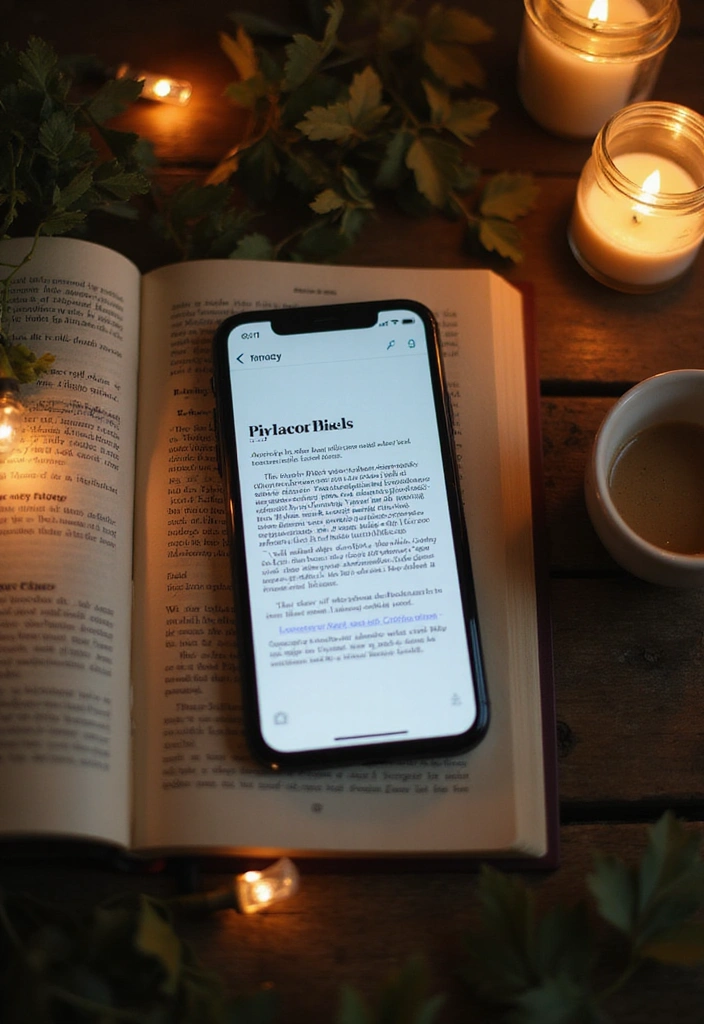
When downloading apps, it’s crucial to take the time to review their privacy policies. This practice provides valuable insights into how your personal data is collected, utilized, and potentially shared.
Before installing a new app or after any significant updates, make it a habit to read through the privacy policy. Pay close attention to details regarding data-sharing practices and whether the app sells your information to third parties. If you come across a privacy policy that appears overly invasive or lacks clarity, consider opting for alternatives that prioritize user privacy.
In addition, be cautious of apps that request excessive permissions that don’t align with their core functionality. To assist you in making informed decisions, you might want to explore privacy policy review services or delve deeper into the topic with digital privacy books. Furthermore, consider utilizing app security assessment tools to enhance your understanding of the apps you use. Staying informed empowers you to make better choices regarding your digital privacy.
Product Recommendations:
• privacy policy review services
• digital privacy books
• app security assessment tools
11. Use Strong Passwords
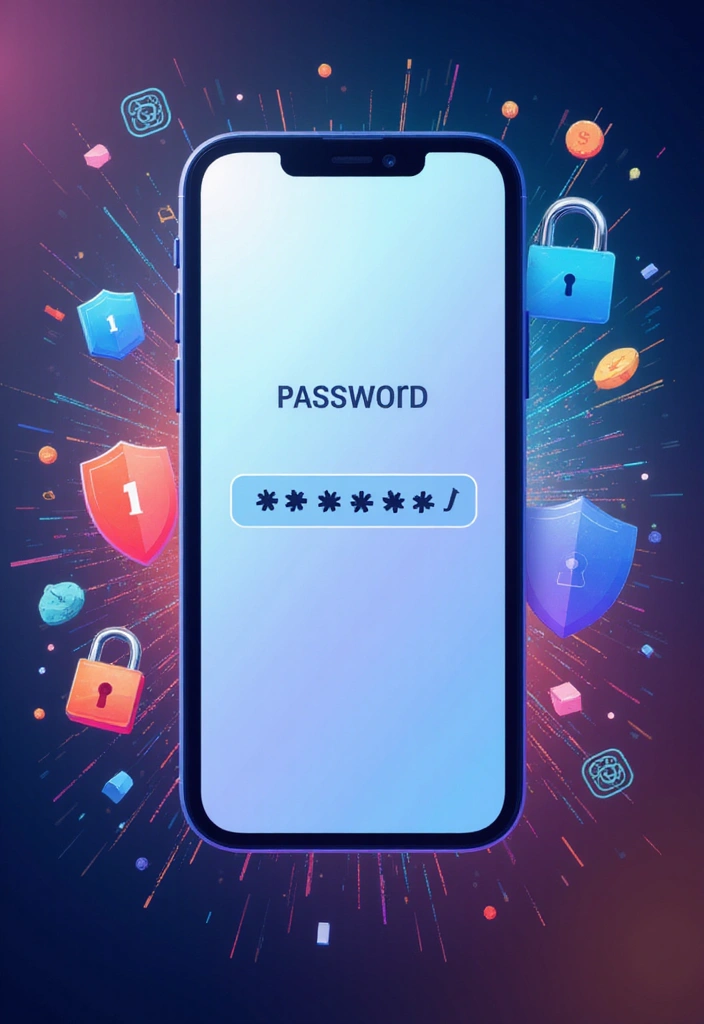
Creating strong and complex passwords is one of the simplest yet most effective ways to protect your data from unauthorized access. It’s crucial to avoid using common words or easily guessable combinations such as ‘123456’ or ‘password.’
Instead, strive for a mix of uppercase and lowercase letters, numbers, and special characters to enhance your password’s strength. To make this process easier, consider using a reliable password manager that can help generate and securely store your complex passwords.
Additionally, make it a habit to regularly change your passwords and ensure that each account has a unique password to minimize risk.
Don’t forget to enable alerts for any suspicious account activity, allowing you to be proactive in maintaining your security. By implementing strong passwords and utilizing tools like a password manager, you significantly fortify your defenses against unauthorized access to your accounts.
Product Recommendations:
• password manager
• phone case with RFID blocking
• secure USB drive
12. Sign Out of Accounts When Not in Use
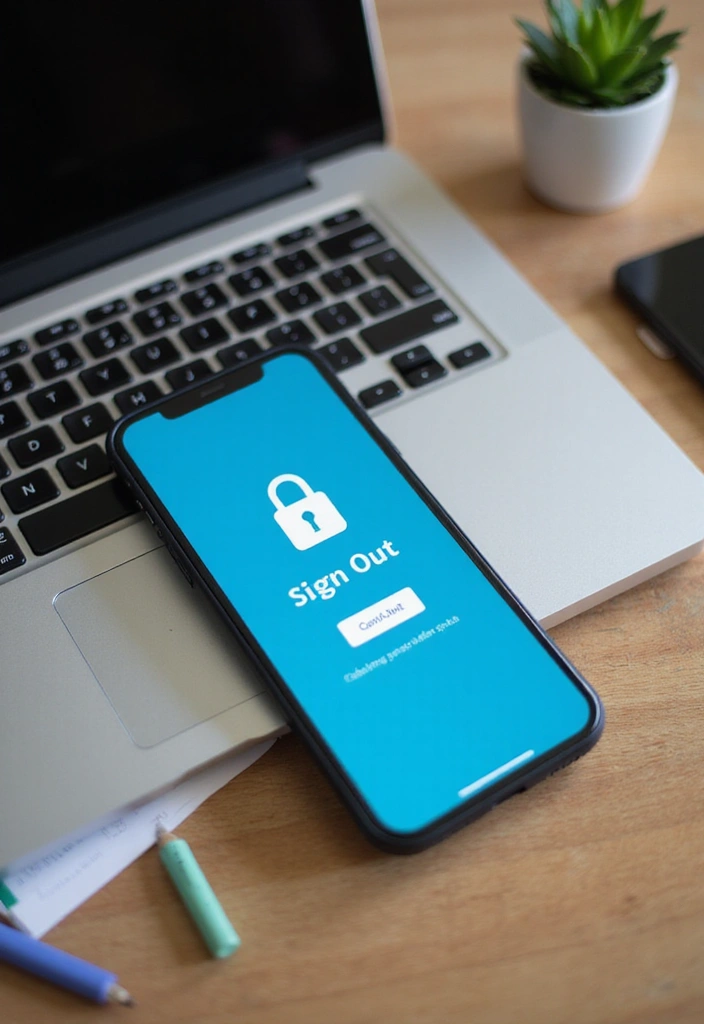
When you finish using apps or websites, make it a routine to sign out of your accounts, particularly for sensitive platforms like banking and personal email.
This practice is crucial for safeguarding your data against unauthorized access, especially if someone else picks up your device or if it gets lost. To enhance your security, consider using account security software that can help manage your logins securely.
Additionally, implementing multi-factor authentication apps can provide an extra layer of protection.
For those who frequently access sensitive accounts, enabling notifications for logins from new devices can keep you informed of any suspicious activity.
This simple yet effective habit can greatly diminish your risk of data breaches and help keep your personal information safe. Taking a moment to sign out might seem minor, but it represents a significant step towards enhanced privacy.
Product Recommendations:
• Password manager software
• multi-factor authentication hardware.
Conclusion
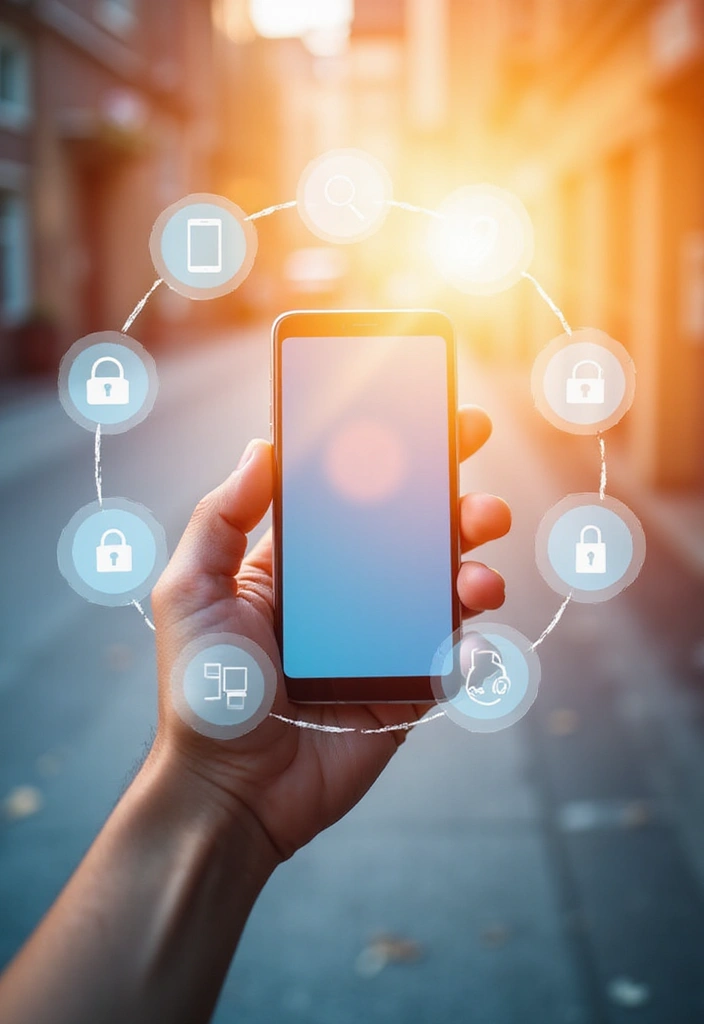
By enabling these 12 smartphone privacy settings, you take proactive steps toward safeguarding your personal data. Each small action contributes to a larger sense of security in our digital lives.
We encourage you to implement these settings today and share your progress with friends and family. Together, let’s create a safer digital environment!
